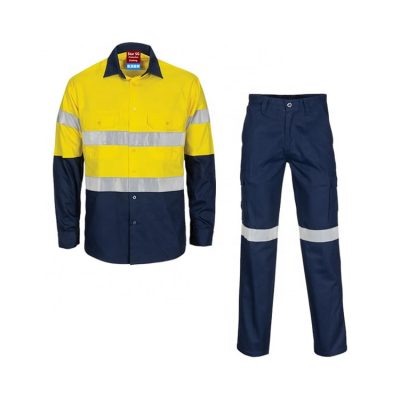1. Good fabric
The fabrics used to make uniforms for business people should be as good as possible. Generally speaking, based on the principle of economic efficiency and beauty, pure wool, pure cotton, cotton wool, cotton linen, wool linen, wool polyester and other fabrics should be preferred.
Pure wool, pure cotton, pure linen and other fabrics are not only natural in texture, but also moisture-absorbing, breathable, close-fitting, comfortable and beautiful, and they look more high-end when worn. When economic conditions permit, this should be given priority.
Cotton wool, cotton linen, wool polyester, etc. are all high-end blended fabrics. Compared with the former, it can be said to seek a second option. They are mostly dangling, straight, strong, resistant to bending and abrasion. Their prices are relatively cheap, so they are economical and practical.
Sometimes, in order to engage in some special jobs or adapt to the needs of some special environments, the fabrics used to make uniforms usually need to have some special functions. For example, fireproof, waterproof, windproof, dustproof, anti-radiation, anti-static, anti-oxidation, anti-high temperature, anti-low temperature, etc. When choosing this special uniform fabric, we must be meticulous, strive for perfection, and strictly control the quality. The standard cannot be relaxed, and the superior can replace the inferior.
If the situation is not special, you should generally not choose polyester, polyester, nylon, medium-long fiber and other synthetic chemical fiber fabrics to make uniforms for business people. In a short time, the uniforms made of various chemical fibers are mostly colorful and durable, which can greatly reduce production costs. However, they often cannot stand the test of time. After wearing for a long time, it will usually be worn out and shiny. On the surface, it is often dirty, fluffy, pilling, and easy to jump or generate static electricity. In this way, it gives a feeling of inferior quality and low-end. Therefore, even if employees are not required to wear uniforms, it is a hundred times stronger than the impression left to society by them wearing low-grade work clothes.
2. Less color
Make uniformly, and don’t make it too colorful or messy. Otherwise, the colors are messy or fancy, which is not conducive to maintaining the overall image of the unit. Therefore, overall, the color of uniforms should be less.
Specifically, when choosing the color of uniforms, three points should be paid attention to: First, the iconic color of the unit should be selected first. In the “image recognition system” used to shape the image of the unit, iconic colors occupy an important position. What it refers to is that in order to reflect its own characteristics and express its own ideas, a certain unit deliberately selects one or several colors to represent itself. In business activities, it is widely used in the logo, emblem, advertisement, slogan, trademark, flag, building and other aspects of the unit. It is also an international practice to use it as the main color of employee uniforms.

































